|
Hindu mythology in the Indus Script
GLYPH #389: CONCH SHELL |  |
|
Glyph 389:
Mahadevan 1977 concordance entries
[1] Conch shell
[2] Emblem of god Vishnu
[3] OM. Conch shell makes transcendental primordial sound of OM
[4] Conch shell is the vessel from which Shiva drinks poison from the Churning of the Ocean of Milk
[5] Conch shell is shanka in Sanskrit
|
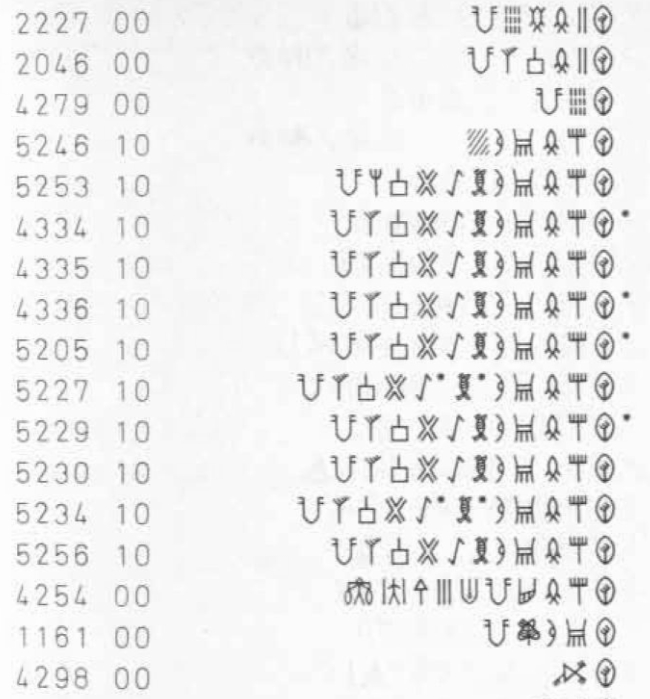
|
5205: GREATNESS OF SHIVA:
Shiva negates poison from the Ocean of Milk & Brahma bird fails to find end of Shiva's endless pillar of fire, Jyotirlinga.
| 0 |
389 |
171 |
59 |
| • |
 |
 |
 |
| ZERO |
conch shell
POISON |
OCEAN sceptre,
5-prong trident |
GOD |
Another interpretation of the Shiva contemplation mantra: • Zero, nothingness. Shiva is the Void. Then OM, the sound of the conch. Primordial ocean. Fish represent the primordial gods, causal forces. Trident is rulership... Trident is an agricultural rake symbolizing harvesting the treasures and lessons of life's ocean.
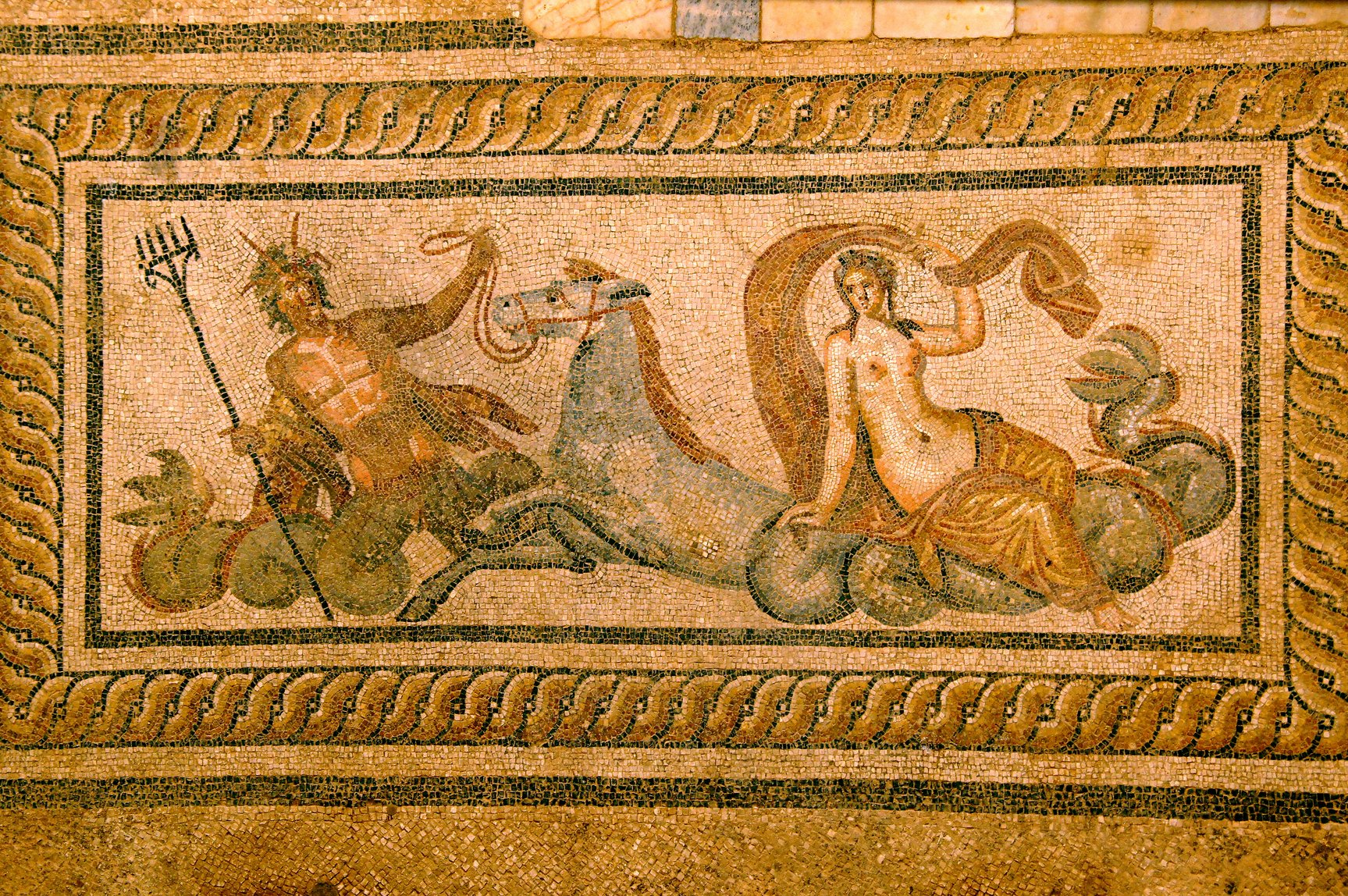
Image of the god Neptune holding a 5-prong trident which resembles Indus script glyphs #171 and #173. Mosaic from a tier house in Ephesus, Turkey.
Licensed from Alamy.com
Ephesus, Turkey Mosaic of Neptune with 5-prong trident fork
5227: SHIVA SWALLOWS POISON FROM THE OCEAN OF MILK & BRAHMA BIRD FAILS TO FIND END OF SHIVA'S ENDLESS PILLAR OF FIRE.
Upside-down 5th head of Brahma #249 (also linga, churn), representing his over-grown ego and sin of lying, is decapitated Shiva with the slice of a blade of grass #169. Dead Brahma bird #51. End of his flight of arrogance. X, strike, destructionCrossing over, transformation, reincarnation.
4279: OM (reverberation) SHIVA
END DRAFT PAGE -- EDIT / DELETE BELOW --
COSMIC CROSS-ROADS, BLACK HOLE, COSMIC AXIS linga shrine. In the legend of the Churning of the Ocean of Milk,
the god Shiva saved the world by swallowing a foaming, toxic black poison that emerged from the water before treasures and
Amrita immortality nectar. The sage Agastia also exhibited bottomless swallowing power when he drank an entire ocean in order to expose the lair of demons
who were lurking at the bottom and who were emerging at night for deadly attacks on holy people. This enabled the gods to eliminate the demons, but because Agastia had digested the water
and couldn't restore it, the world had low ocean
levels until generations later when the Ganga river was brought down from heaven, splashing down and cascading through Shiva's matted locks of hair.
The infinite Shiva linga, the Jyotirlinga, is a column which penetrates the three worlds, creating space within duality for existence.
|
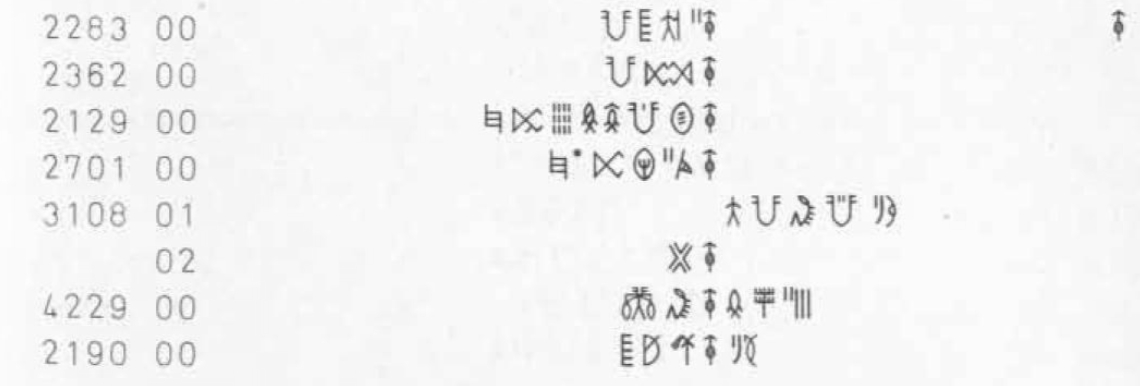
#398 astras, weapons, X destruction, #160 flail whip force, war #53 double-scorpion, fighting scorpions
Xplosion, Xtinction, Xformation
X complementarity: destruction or cross-roads and transformation. 402: Hollow vessel or conical horn.
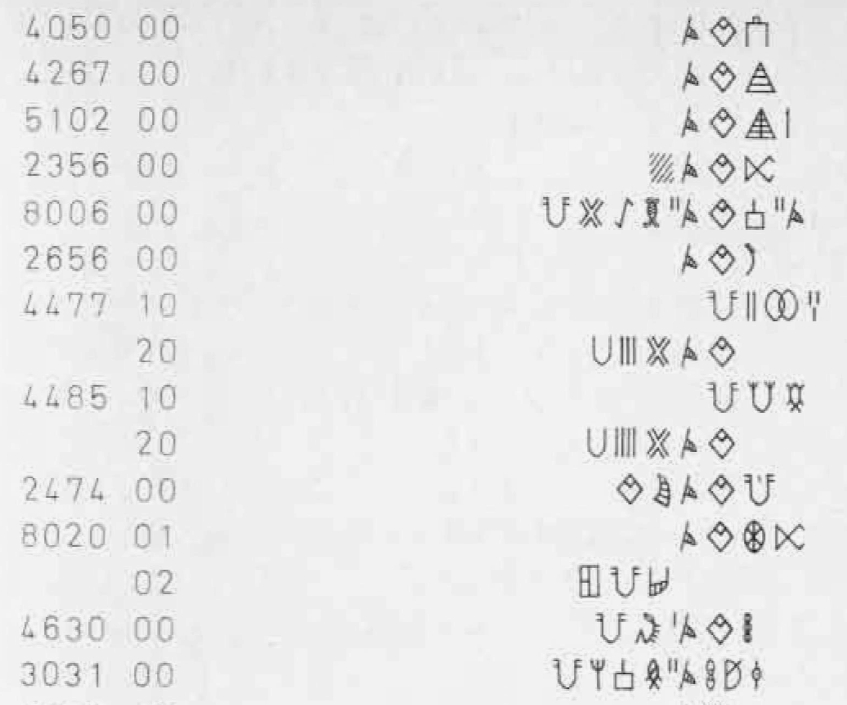

402-horn-tusk-grass-thread.jpg. Linga as delicate as a blade of grass, yet like a sword. Like prayer bead thread which joins the worlds. Matsya tusk which towed Manu boat from flood to saftey, Boar tusk which lifted world from the bottom of the celestial ocean, limitless pillar of fire. Aspects of linga.

VAMANA text - Vishnu (Boar avatar) Mohini - Amrita elixir - • not. Shiva swallowing + cheek. VAMANA: V boar tusk. A ) shell, avatar. A |. • na, anta end
|
ENDLESS PILLAR - THE SHIVA LINGA. Glyph #176: endless pillar. #81 The bird (swan) avatar of god Brahma. In the legend of Jyotirlinga, Brahma had a contest with Vishnu to see which would be first to discover the end of a mysterious flaming pillar of fire. Brahma flew up with his bird avatar (#81), and Vishnu dug down with his boar avatar (#62). Glyph #418 (or glyph #0) specified by Celeste Horner 2024 to extend the 417 glyph system of Mahadevan 1977 by one character. This dot, bullet point, iris, or bindu character • is a null, void, or negative. It represents Shiva's function of annihilation, and the case that the endless linga has no end, so both Brahma and Vishnu failed in their quest to determine the limits. Glyph #219 is Mount Meru with a vertical bisector representing Shiva as the axis of the world. In a contest between Naga serpent Vasuki and Vayu, the wind, a spur was broken off of Mount meru. This became Mount Mandan, the giant churning rod #336 twisted by devas (the gods) and asuras (the demons) during the Churning of the Ocean of Milk. Glyph #343 is a variant of the Shiva symbol #342, the most frequent glyph in the Indus Script. With a short stroke in the center, it represents the Shiva lingam, or the divided Ardhanarishwar half male, half female form of Shiva.
|

Boar tusk and bird refer to Vishnu and Brahma avatars in legend of Jyotirlinga. Swallowing mouth and scorpion poison, is Shiva ingesting poison to save the world during the Churning of the Ocean of Milk.
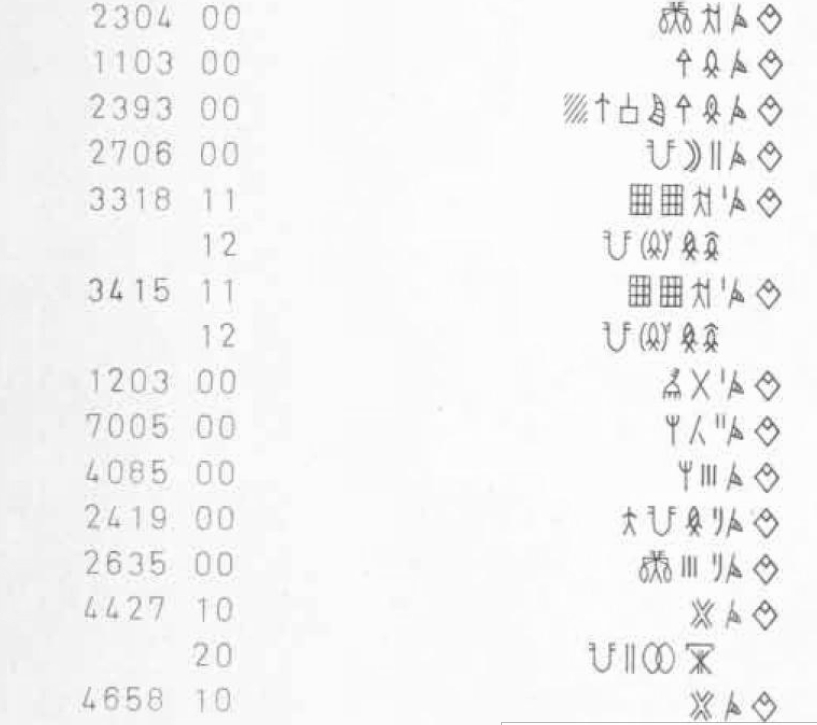

Eye - Brahma - Jyotirlinga - Vishnu - not
Neither Brahma with his swan avatar, or Vishnu with his boar avatar could find the end of the blazing pillar of Shiva.
#267 linga temple or shrine // #51 Brahma bird // #402 Vishnu boar tusk // #397 third eye Shiva // #98 negative stroke, apostrophe, missing, not
Shiva and the pillar of fire, Jyotirlinga
|
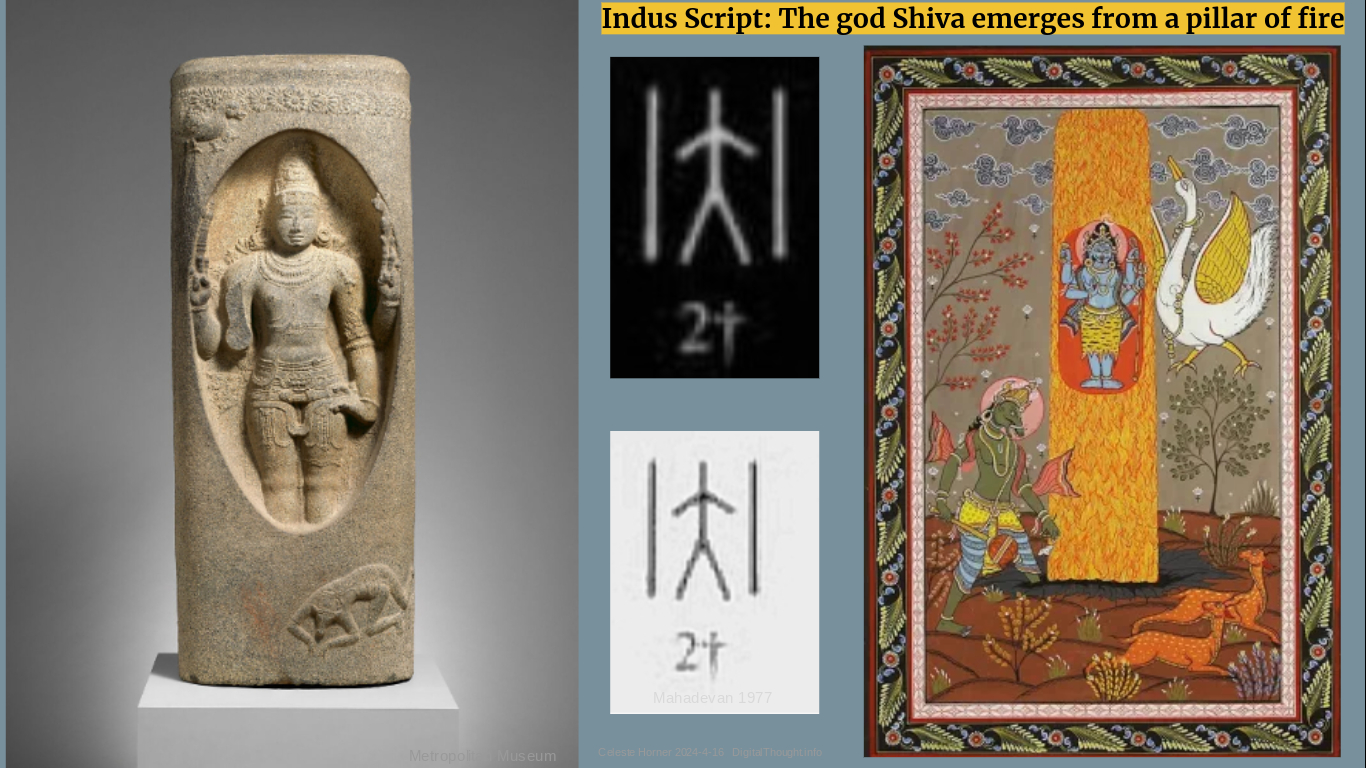
Image credits: Metropolitain Museum and Indianholiday.com
|
GLYPH #2: JYOTIRLINGA - GOD SHIVA EMERGES FROM A PILLAR OF FIRE
Indus Script glyph #2. @ HOW BRAHMA LOST HIS FIFTH HEAD. A dispute arose between gods Brahma and Vishnu over who was the greatest.
Suddenly, an enormous pillar of light and fire blazed up between them. They agreed that whoever could discover the end would be declared superior. Brahma transformed into a swan (#63, #64) and flew upwards. Vishnu in the form of his boar avatar (glyph #62, also Matsya god fish with tusk) dug down towards the netherworld. Both gods searched, but neither could find the end of the pillar. When they met again, Vishnu admitted truthfully that he failed to find the bottom. Brahma, however, lied and produced a flower that he said came from the top. Just as Vishnu was about to bow to him, the god Shiva emerged from the pillar in a rage, and with a blade of grass, sliced off the 5th head of Brahma which had swollen his ego and caused him to lie (#79, headless bird #83, #198, #51, #52). After that, it is was apparent that Shiva was the supreme deity. Jyotirlinga (radiant linga) shrines (#267, #270-283) across India are honored as emanations of this first manifestation of Shiva as a cosmic pillar of light (#61). Shiva Puranas, Chapter 7
Concordance entries for glyph #2: @ | @ ♣ | Glyph #2 info page
|
Hindu mythology interpretation of the Indus Script
Celeste Claire Horner 2024
 | Jyotirlinga, the pillar of fire from which Shiva emerged in the legend of How Brahma lost his fifth head |
| U | universal, union.
Third eye tika. Shiva wallowed poison from Ocean of Milk. |
| |||| | Represents the Ganga river falling from heaven. Shiva saved the world by absorbing the impact of the water fall. It flows gently from the top-knot of his hair. |
 |
The lovely divine maidens, celestial musicians and dancers, the Apsaras, who emerged from the Ocean of Milk. Shiva saved the world by swallowing the poison which emerged from the Ocean of Milk so that the Devas could have the Amrita elixir of immortality and other treasures. The goddess Lakshmi, divinity of wealth and fortune, may be represented by this symbol. She has a special connection to Shiva. The Bael tree which sprouts from her hand, and the fruit, which represents her also, are sacred to Shiva. |
 |
The dead. Skeleton man. Corpse in fetal position with spinal vertebrae protruding. Death of Shiva's wife Sita in a sacrificial fire. The dead in a fetal position in anticipation of reincarnation and rebirth. Pashu, the noose that Yam, God of Death, uses to pull a soul from a body.
|
 | E: Endless, deep and high. Represents the Jyotirlinga pillar of fire representing Shiva. The pillar of the cosmos, the gods Vishnu and Brahma failed to find the end of it. |
|||| Represents the depths of the Ocean of Milk
Glyph 171. Represents Ocean of Milk, or lord of the Oceans. 5-prong trident. Also appears as Neptune's 5-prong trident sceptre in Ephesus house. Alamy.
8059: Ψ Trishul. Jyotirlinga I. ||| Tri Murti, TRi. TRIMURTI.
How Brahma Lost His Fifth Head ^
|
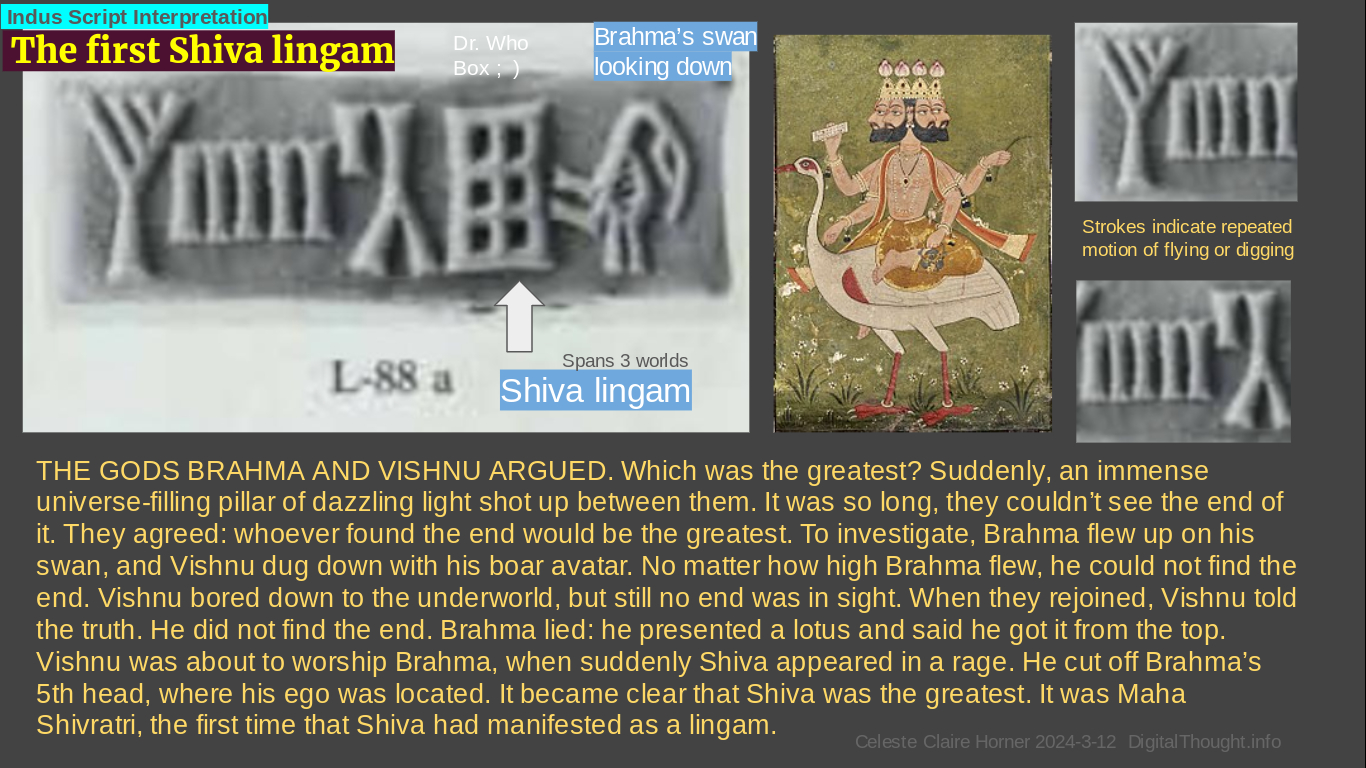
Figure 6: Indus Script with glyphs for a Shiva lingam, the swan of Brahma, and multiple strokes for digging and flying action. CCH 2024-3-12.
The swan's head is bent back like it is looking down from the tall tower, has lost its head, is dead, or ashamed. The head looks like the Egyptian hieroglyph for crescent moon, an emblem of Shiva. The upside down Y look like the Eiffel tower. The lingam was an infinite tower.
RELATED INDUS SCRIPT GLYPHS:
Glyphs #2 (Shiva appears in pillar). Glyph #5 (Brahma head). Glyph 79 (Brahma bird avatar looking down). Glyph #83 (Brahma bird avatar with no head). Glyph #198 (5th head of Brahma, 5th block on top of stack of 4).
|
[INDUS SCRIPT HOME]
DRAFT UPDATED 2024-5-20 , CREATED 2024-5-20 celeste@digitalthought.info / celeste.horner@gmail.com
|
|


















